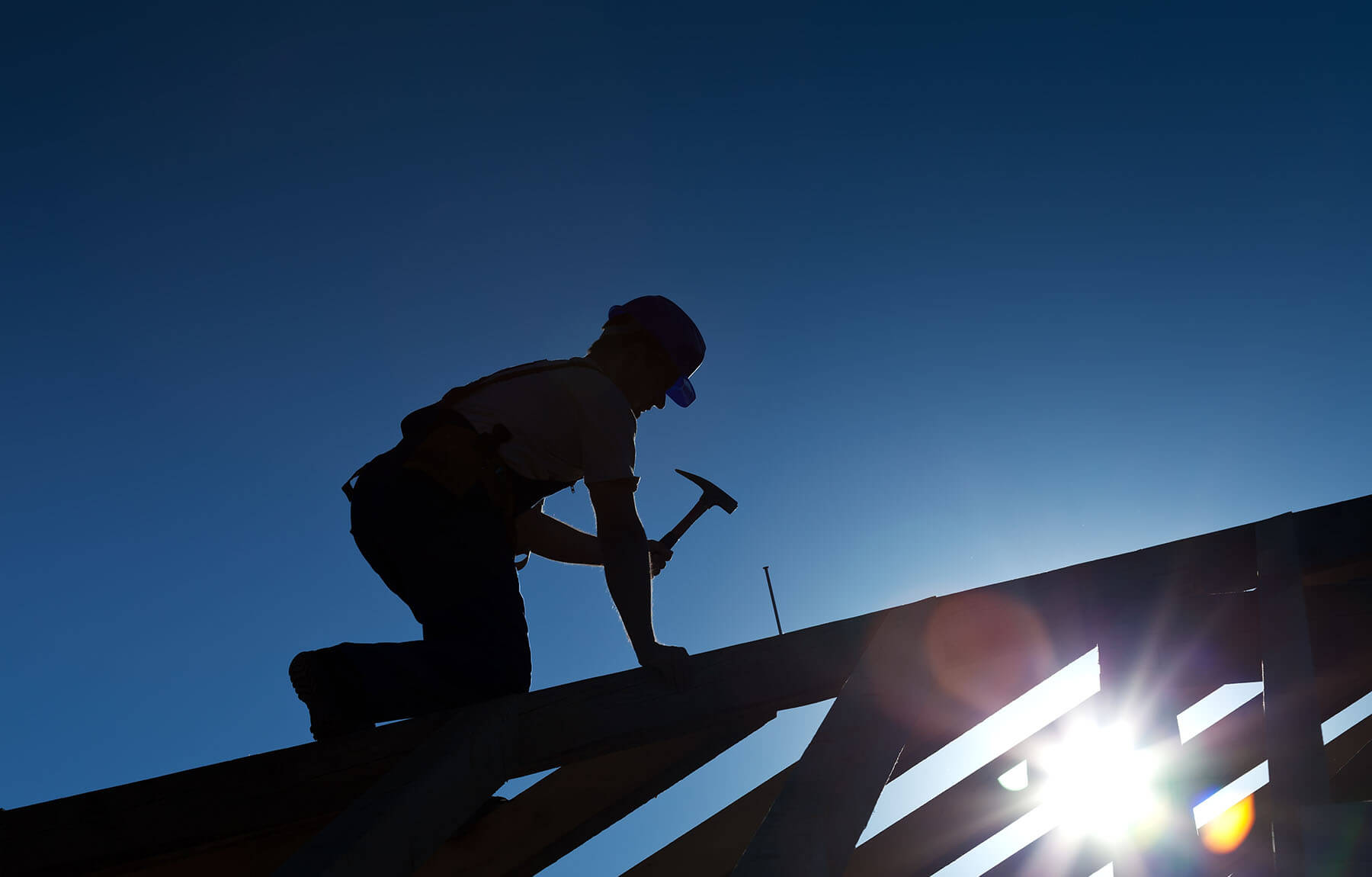Tips to Help You Prevent Roofing Problems
The Yancey Family, Serving Sacramento Since 1888
Keeping a safe roof over your head is one of the most significant accomplishments you can have in your life. However, taking care of your roof isn’t just a one-and-done ordeal. Roofs can last a long time with preventive maintenance and a watchful eye from homeowners, contractors, and professional roofers. Still, sometimes even the best roofs need a little extra TLC. Learn the signs that mean your roof requires attention and tips on how to prevent roof leaks and other problems before they begin.
Plan for Professional Inspections
The number one way to prevent roofing issues like leaks and damages is to schedule routine inspections for your roof. Homeowners can keep a sharp eye on many indicators that can be seen from inside the home, but are often unable to inspect the roof’s exterior thoroughly because of its location. Even if they can climb atop the house, they do not have the trained eye that professionals do to spot hairline cracks and ridges in tar that may be invisible to laypeople.
Remember the Importance of Timing
If you have a new roof installed in your home, schedule a routine inspection at the five-year mark and then once a year in the early summer every year after that. If you purchase a new home, schedule a roof inspection for the first early summer that you are in the house. If you suspect the roof has issues when you move in, do not wait until summer to schedule an inspection. Call to schedule immediately, and they will come as soon as the weather is safe enough to do so. The more you know about the roof’s state, no matter its documented age, the better for reducing damages moving forward. It’s also a smart move to prevent roof leaks.
Schedule Routine Maintenance
Depending on where you live, storms can increase the overall wear and tear that your roof endures over time. Scheduling routine maintenance may go hand in hand with scheduling inspection. Be sure that when you call to make your yearly inspection appointment, you request that the professional allot time to make minor repairs, if necessary. Sometimes, an inspection may yield the discovery of storm damage that an insurance company could cover, so be sure to consult with your roofing specialist before work begins.
Keep Up With Landscaping
Sometimes, the best roof care is preventive care. Many common roofing problems come from unkempt landscaping. Be sure to keep all landscaping trimmed and away from the home. Large trees that have the potential to fall on your roof should be cut back or removed. Even if trees do not have the potential to fall on your home and damage your roof, they may have leaves that will fall and gather on the roof to block gutters. Blocked gutters and piled leaves near and around the roof can cause the surface to retain moisture and sometimes even cause rot in damp areas. Clogged drains also contribute to the moisture retention problem. Both can cause soft spots in the roof where shingles can peel back, or leaks can form. To combat this, maintain landscaping regularly with your roof in mind.
Clear the Gutters
Gutters and downspouts can be a severe issue if not maintained. Blocked gutters can cause water to back up under the roofing materials. Sometimes this pooling separates the materials from the home, and sometimes, it forms a soft spot underneath where water will eventually seep into the house, causing even more damage. Keep gutters and downspouts free of debris to prevent roof leaks or damage.
Replace Damaged Shingles
If shingles are damaged by backed-up water, wind damage, or other issues, they must be replaced immediately. Missing or damaged shingles are breeding grounds for roofing problems. The rest of the roof structure is vulnerable to additional water damage from the inside out. Your home is now also exposed to the elements, and it is only a matter of time before moisture makes its way inside your home. Water damage is costly and can be dangerous if mold forms before the problems are identified. Routine inspection will help identify any missing or damaged shingles that need to be replaced.
Ensure Flashing Is Sealed
If part of your roof is opened for maintenance or construction, it must be resealed with a material called flashing. The flashing should have a tight seal to ensure that water, air, and anything else cannot penetrate the home. Improperly installed flashing or flashing that has come loose can present several problems. Flashing can move with the wind, allowing air and moisture to seep under shingles and into the home. Loose flash ing can also invite animals, who love to make their way inside for shelter during the colder months. Loose flashing looks a lot like a welcome sign to four-legged wildlife that shouldn’t be inside your house. To secure flashing, call a professional if you see that it appears loose.
ing can also invite animals, who love to make their way inside for shelter during the colder months. Loose flashing looks a lot like a welcome sign to four-legged wildlife that shouldn’t be inside your house. To secure flashing, call a professional if you see that it appears loose.
Inspect Skylights
It’s not just the flashing around installations in your roof that can leak. Often, any framing that is on the top can cause problems, too. Improperly installed skylights are notorious for leaking into homes and causing water damage. Skylights can be a beautiful and calming addition to a home, but improperly installed additions can be one big, stressful headache. If you are building or have built a house with a skylight, be sure that the skylight is up to code. If you purchased a home with a skylight, have the frame, glass, flashing, or surrounding areas inspected immediately to prevent further damages from occurring.
Protect From Popping
Shingle blistering is a warning sign that professionals know to look for on your roof. Blistering may not be the biggest deal, so long as the granules do not come off. However, if the blisters pop and the granules begin to come off, your roof is in danger of granule loss. Granule loss makes your roof sensitive to heat and can take time off its overall lifespan. Homeowners can learn to protect roofs from sun heat, blistering, and popping by addressing ventilation issues in attics or crawl spaces and clearing any additional debris that may have settled.
Take Care With Flat Roofs
Flat roofs can be trickier to manage than traditional steep-pitched sloped roofs, and typically have a shorter lifespan. To keep them in top shape, flat roofs must be maintained with care. Homeowners regularly ask, “how do I protect my flat roof?” But they may not even know that their roof isn’t actually really flat. All roofs have a very slight slope. Regardless, it is true that “flat” roofs are more susceptible to pooling water and clogged drainage systems than other roofs.
Learning how to find a leak in a flat roof quickly can save homeowners from damages. Begin with a routine inspection just as recommended for all roofs. Then clean gutters, downspouts, and the rooftop frequently by making a schedule. Have your rooftop professionally sealed by qualified professionals to prevent additional damages or trapped moisture. Be on the lookout for any cracks between inspections and also have them sealed to prevent leaks before they happen.
When to Replace Your Roof
- Flat roofs: Because of how flat roofs are structured, their life span is just a little shorter than a typical sloped roof. Expect repairs to prevent roof leaks at the 8- to 10-year mark. Begin saving for a new roof at the 8-year mark to avoid additional damages and hefty charges.
- Typical roofs: Typical sloped roofs can last anywhere from 15 to 20 years, depending on the area’s climate and the materials used. Homeowners should expect preventive assessment and repairs at the 15-year mark and begin saving for a new roof by the 20-year mark to avoid additional damages and dipping into savings.
Turn to the Professionals
To keep your roof in prime shape until it’s time for replacement, be sure to follow these tips for upkeep and care. Remember to budget for routine inspection and maintenance as well as roof replacement as necessary.
